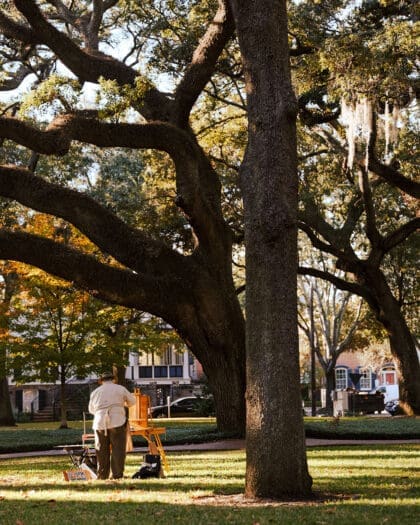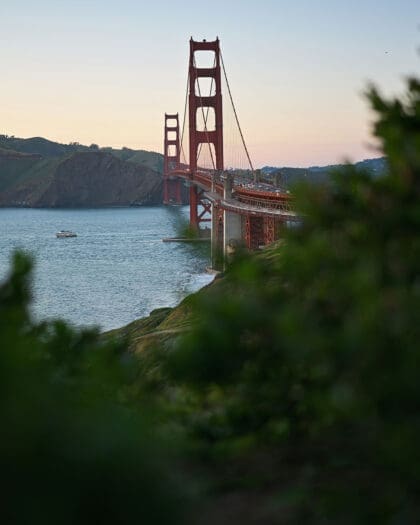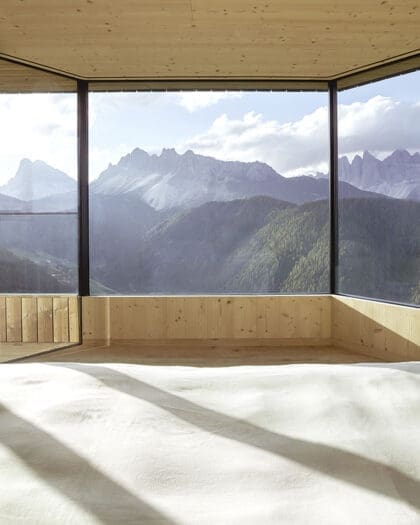
The most beautiful art and design destinations in Europe
These remote islands, vineyards and coastal retreats combine gorgeous settings with sculpture gardens, world-class art and architecture
Although some of the finest art collections in the world can certainly be found in the grand museums of Florence, Paris, London and Venice, there are unique art destinations to be found outside the confines of urban centres. From galleries embedded in remote Balearic islands and traditional Alpine towns to artist studios in quiet fishing villages and sculpture parks on the grounds of French vineyards, here are Europe’s most unmissable art destinations to be visited at least once in your lifetime – and where to stay when you get there.

Hauser & Wirth, Menorca
On a secluded island in the harbour of Mahon, Menorca, an 18th century British naval hospital has been renovated into a destination art gallery and sculpture garden by Hauser & Wirth. The buildings were sensitively restored by architect Luis Laplace, and the garden design was carried out by Piet Oudolf, both having worked together on the Hauser & Wirth gallery in Bruton, Somerset.
Entry to the island is free, and visitors arrive on the Isla del Rey via a short boat trip from Mahon port. As well as exploring the gallery, visitors can shop at the boutique, eat at the onsite restaurant, and roam the garden, where works by Eduardo Chillida, Louise Bourgeois and Joan Miró can be found.

Stay at Experimental Menorca
A 30-minute drive from Mahon into the Menorcan countryside brings you to the secluded Experimental Menorca hotel, situated in a restored 19th century finca. The 43-room hotel has an onsite restaurant and bar serving dishes and cocktails that make use of ingredients grown in the kitchen garden. There’s also an in-house spa, and the chance to book horse riding, diving excursions, paragliding, and other activities from the hotel. Rooms from 174 EUR.

Palma, Mallorca
Palma, the capital of the Balearic island of Mallorca, has some excellent art draws up its sleeve. Overlooking the port and the Parc de Sa Feixina, Es Baluard Museu occupies a former bastion built in the 16th century. Combining the original defensive walls and modern concrete interventions, the museum itself is as enthralling to explore as the exhibits that lie inside. The collection encompasses more than 800 works dating from the late 19th century to the present day, and includes masterpieces by Cezanne, Gauguin, Picasso, and Miró. There is also a noteworthy collection of Mediterranean landscapes and works by artists with links to the Balearic Islands, such as Santiago Rusiñol, Anglada-Camarasa and Gelabert. General entry is priced at 6 EUR.
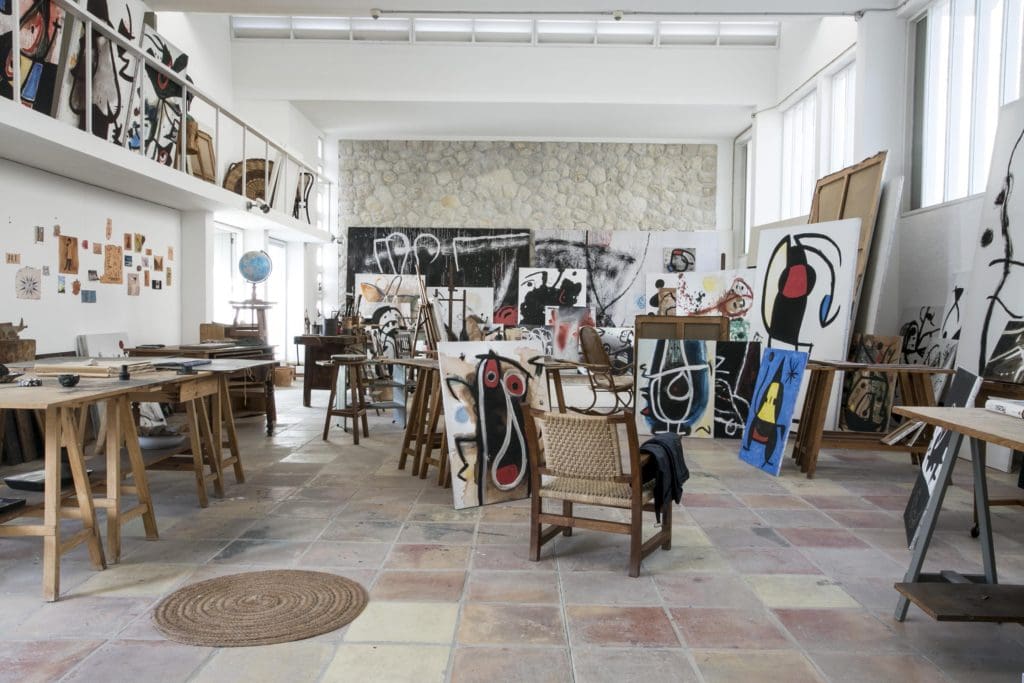
Taller Sert
On the outskirts of the city in Cala Major, you can visit Taller Sert, Joan Miró’s studio, where the artist lived and worked for almost 30 years. The studio is now known as the Fundació Pilar i Joan Miró a Mallorca, and offers visitors an insight into Miró’s artwork and underlying creative process, having reopened to the public in 2018. The building was designed by Miró’s friend, the architect Josep Lluís Sert, who was a former student of Le Corbusier. It is an icon of modern architecture: terracotta tiles — many adorned with Miró’s paint splatters — cover the floors, while skylights let in floods of Mediterranean light from above. General admission is 10 EUR. Visit in equal parts for Miró’s paintings and sculptures in the setting he composed them in, and the building itself. Travel to Teller Sert from Palma by bus or hire a car.
Stay at Nakar Hotel
A few minutes’ walk from Es Baluard Museu on Jaime III Avenue is Nakar Hotel, a smart, contemporary hotel in its third generation of family management. Part of the Design Hotels collection, Nakar’s interiors are sleek, uncluttered and modern, designed by Mallorcan natives Magi Margués and designer Marga Rotger, with locally sourced oak and stone juxtaposed with black ironwork. There’s a restaurant and cocktail bar on the eighth floor, a rooftop infinity pool and bar on the ninth and an underground spa area with treatment rooms, a hamman, sauna and heated pool. Rooms from 120 EUR.

Chillida Leku, San Sebastian
On the outskirts of San Sebastian is the former home of Basque sculptor Eduardo Chillida (1924-2002). The artist methodically transformed the land around his traditional farmhouse into an open-air gallery of his work – most notably his monumental abstract works in corten steel, whose rusted red surfaces contrast with the rolling green gardens surrounding the wood and stone farmhouse. Today, the home is open as a vast gallery housing Chillida’s paintings, prints and drawings, while the grounds and gardens showcase his sculptures, in the location he chose for them. Managed by Chillida’s son, Luis, Chillida Leku is around a 15-minute drive from the centre of San Sebastian, so would make for an excellent day trip during a city break there. Standard entry is priced at 14 EUR.
The Cristóbal Balenciaga Museum can also be explored, located a one-hour bus ride from San Sebastian (or 30-minute drive). Standard entry is priced at 10 EUR and there are workshops and activities held throughout the year.

Chateau La Coste, Provence
Chateau La Coste is a working biodynamic vineyard, hotel, and sculpture park with several galleries and restaurants to explore, embedded in the rolling hills north of Aix-en-Provence. It’s as much an architectural destination as it is an art pilgrimage: the main visitor centre is designed by Japanese architect Tadao Ando, who also built several pavilions dotted around the grounds; there’s an abstract wooden installation by Kengo Kuma; a pavilion by Frank Gehry (originally built for the Serpentine Gallery in London), and galleries by Renzo Piano, Oscar Niemeyer and Richard Rogers – the latter’s last project before his retirement.
Among the 600 acres of rolling vineyards, more than 40 sculptural works can be discovered, including an Alexander Calder mobile, Hiroshi Sugimoto sculpture, and Louise Bourgeois spider, rising from the pools of water that surround the visitor centre; installations by Lee Ufan, Tracey Emin and Ai Weiwei hide between the vines, and even works by Yoko Ono and Bob Dylan can be found in the grounds. You could spend an entire day exploring the estate, and that’s before you’ve stepped inside one of the galleries, with a packed schedule of exhibitions throughout the year. All of this can be explored with an entrance fee of 15 EUR per person.
To extend the experience, stay onsite in the luxurious Villa La Coste, where further collectible pieces can be found in the restaurants, lounges and bedrooms. Suites from 900 EUR a night.

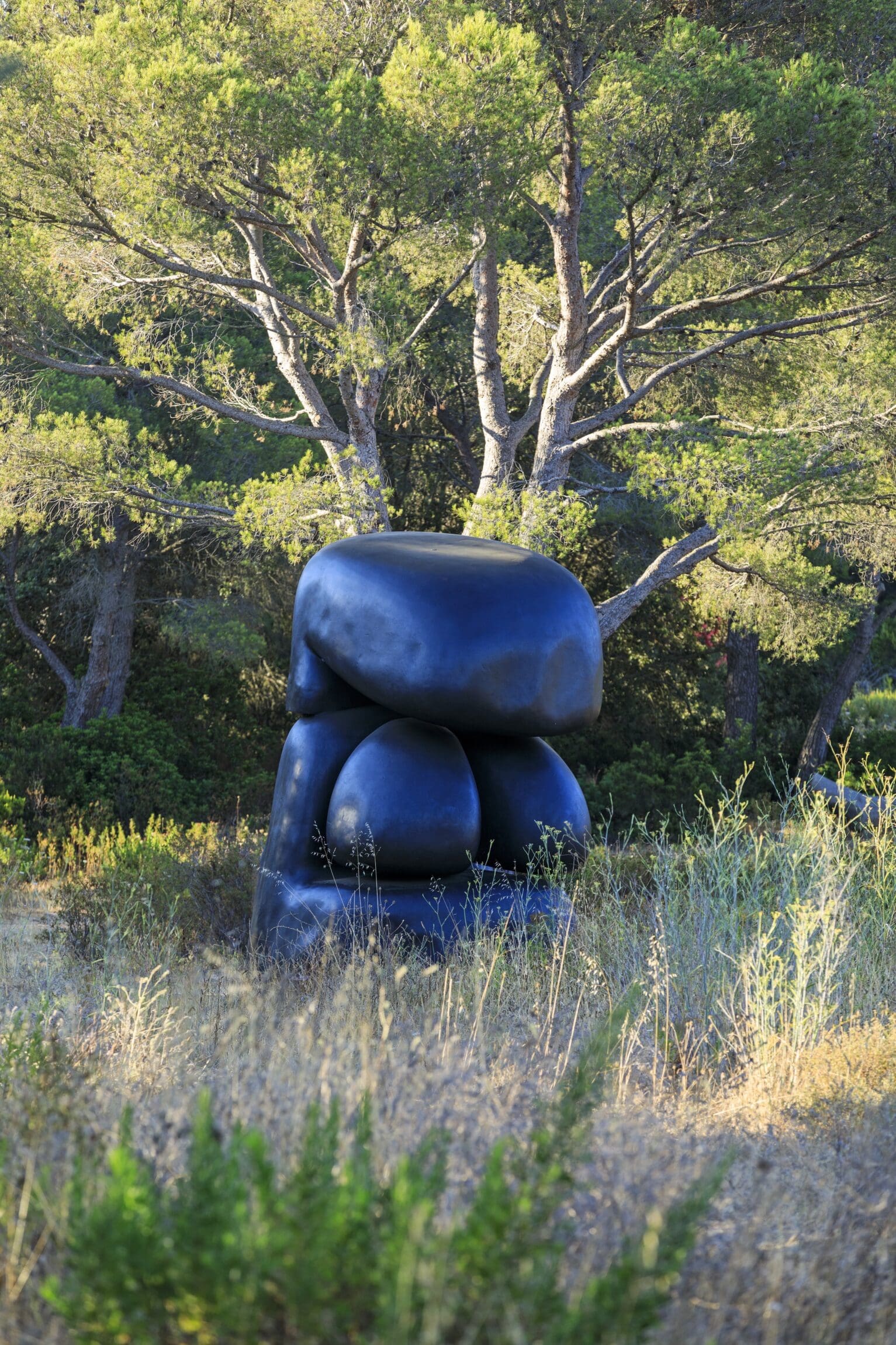
Villa Carmignac, Porquerolles
On the forested Ile de Porquerolles, just off the Côte d’Azur in the south of France, a private collection of more than 300 works is presented in a modern home surrounded by gardens. Villa Carmignac, which houses the collection of Fondation Carmignac, presents one major show a year from the end of April to the start of November, with entry for the exhibition and gardens priced at 16 EUR. The island is accessible by a 15-minute boat ride from La Tour Fondue, and guests are asked to remove their shoes when stepping inside the villa. This year, Villa Carmignac presents The Infinite Woman, which investigates portraits of the female form throughout art history, from Botticelli to Andy Warhol. The gardens are well worth exploring to discover the 15 sculptures hidden among the flora.


St Ives, Cornwall
The small fishing village of St Ives in West Cornwall has been closely associated with art since the 20th century, when British abstract artist Ben Nicholson and painter Christopher Wood first visited in 1928, and met local naive painter Alfred Wallis. Nicholson later moved there with his wife, the sculptor Barbara Hepworth, in 1939, and the pair led a loose school of artists based in the town throughout the 1950s, which included the acclaimed studio potter Bernard Leach.
Today, you can find Tate St Ives overlooking Porthmeor Beach in the centre of town, which celebrates the major works from the Tate school of artists from the 20th century to the present. Tate also manages the Barbara Hepworth Museum, which is worth booking (entry priced at 8 GBP). The museum is Hepworth’s former home and studio, and many of her sculptures in the garden, as well as her brushes and tools inside, have been left as they were on her death in 1975.
Bernard Leach’s pottery studio is also available to explore in town, and is still the base of operations for Leach Pottery, which continues to produce stoneware in his style. You can explore two galleries here, take a look at the wheels and kilns, and get involved in a pottery class.

Hauser & Wirth Somerset, Bruton
The small Somerset village of Bruton in the English countryside has experienced something of a revival, no small thanks to Hauser & Wirth, who opened a large gallery in a series of restored farm buildings on the edge of the village. Combining expansive exhibition spaces and a Piet Oudolf-designed garden with a bar, restaurant and farm shop, Hauser & Wirth Somerset transcends a more conventional gallery space to become a genuine art destination. There is also a connected shop, Make Hauser & Wirth, on the high street that stocks craft pieces from local makers, such as ceramics, woodwork and textiles. Entry is free and the gallery hosts one major show each year, plus other exhibitions by artists in residence.

Stay At The Chapel
For where to stay during your Bruton getaway, look no further than At The Chapel, which, as its name suggests, is a small boutique hotel in a former chapel. Eight bedrooms are arranged around a central double-height volume that hosts the hotel’s restaurant, where breakfasts of croissants and coffee gradually give way to cocktails and wood-fired sourdough pizzas in the evening. If all the rooms are occupied during your stay, at least pop over for breakfast or dinner, or both. Rooms from 139.50 GBP.

Kettle’s Yard, Cambridge
Another must-visit art destination in the UK is Kettle’s Yard in Cambridge. The former home of collector Jim Ede and his wife Helen, situated across four interconnected workers cottages, has become something of a creative pilgrimage site, celebrated for Ede’s unique mode of collecting, which sees art and design pieces combined effortlessly with found objects such as stones, shells and feathers, as well as the carefree, domestic setting itself. Included in the collection are notable works by 20th century British artists, including those from the St Ives school like Barbara Hepworth, Ben Nicholson, Christopher Wood and particularly Alfred Wallis, as well as other 20th-century titans like Joan Miró. Kettle’s Yard is more an art experience than a museum visit, so explore at leisure and see where your eye takes you; pieces are hung at various heights on the wall, so you may be surprised by a Nicholson etching hanging low behind a side table. Entry is free, and you can book a timed slot in advance.

Stay at the University Arms
The University Arms started out as a 15-room Victorian coaching inn, and now extends across 189 rooms and six floors. The Regency exterior of the hotel was restored by classical architect John Simpson, who is known for the Queen’s Gallery at Buckingham Palace, as well as several courtyard buildings for Oxbridge colleges, while the interior was handled by Martin Brudnizki, the London-based Swedish designer behind many of the British capital’s most immersive haunts, including Annabel’s members’ club. Each suite is named after a different Cambridge alumni, such as Alan Turing, with a bespoke book collection relating to each character. There’s also a book-filled library downstairs, suiting the studious atmosphere of the town perfectly. Rooms from 204 GBP per night.

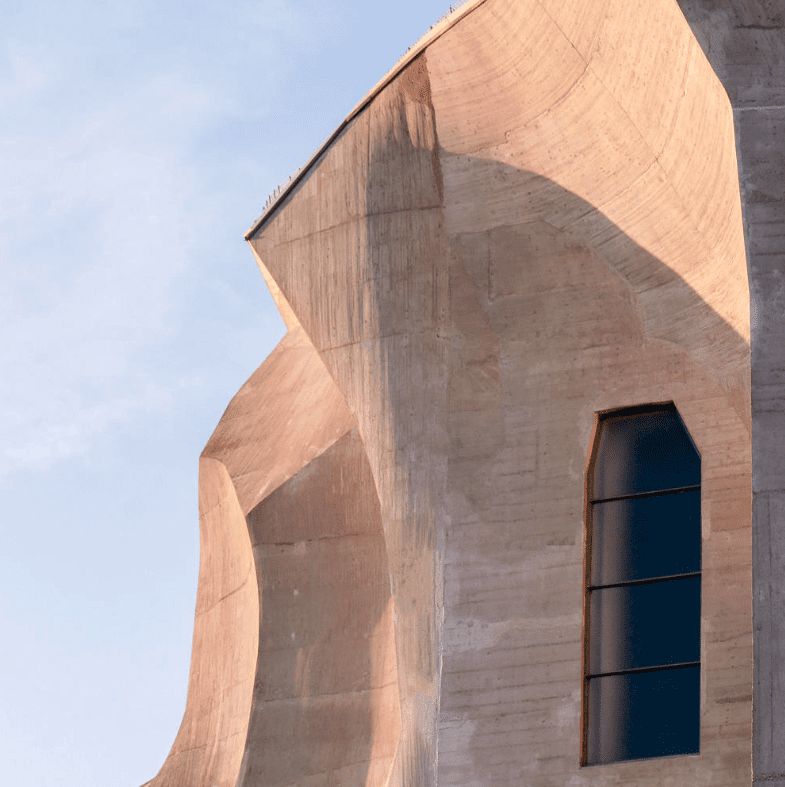
Dornach, Basel
The Swiss city of Basel is well known in the art world as the host of Art Basel each year. If you’re in town for the fair, consider extending your visit with a day trip to the nearby suburb of Dornach, a 30-minute train ride south of the city centre. The small town is the global headquarters of the Anthroposophical Society, an esoteric, mystical movement founded in the early 20th century by the philosopher and spiritualist Rudolph Steiner. The Society continues to follow anthroposophy – a philosophical and spiritual mode of thought developed by Steiner, which he applied to a wide array of subjects, including education, organic farming, architecture, design and the arts (Steiner and Waldorf schools continue to use this anthroposophical method of teaching today). Several early abstract artists were passionate followers of Steiner’s theories, and applied his teachings to their practices, including Piet Mondrian, Wassily Kandinsky, and Hilma af Klint – the latter spent much of the 1920s living in Dornach to study the Anthroposophical Society’s archives.

If you visit Dornach today, you can see many of Steiner’s buildings, including the Goetheanum, named for the German philosopher and poet Goethe, as well as the Heizhaus, or Boiler Building, whose towering concrete roof rises into the sky like a column of flame. The buildings are all built in flowing raw concrete, designed in unusual organic forms that avoid straight lines. Inside, much of the furniture and interior architecture continues this theme, with wooden chairs, lecterns, and tables all carved in similar flowing curves. This furniture style developed by Steiner is now known as anthroposophical or Dornach design.
The Goetheanum is considered a masterpiece in 20th century expressionist architecture, and many architects including Frank Gehry and Frank Lloyd Wright have expressed their admiration over the years. Thousands of private homes and other buildings in Dornach have since been built in a similar style. Buy a return ticket on the train and explore the town at leisure to get to know this unusual architectural style.
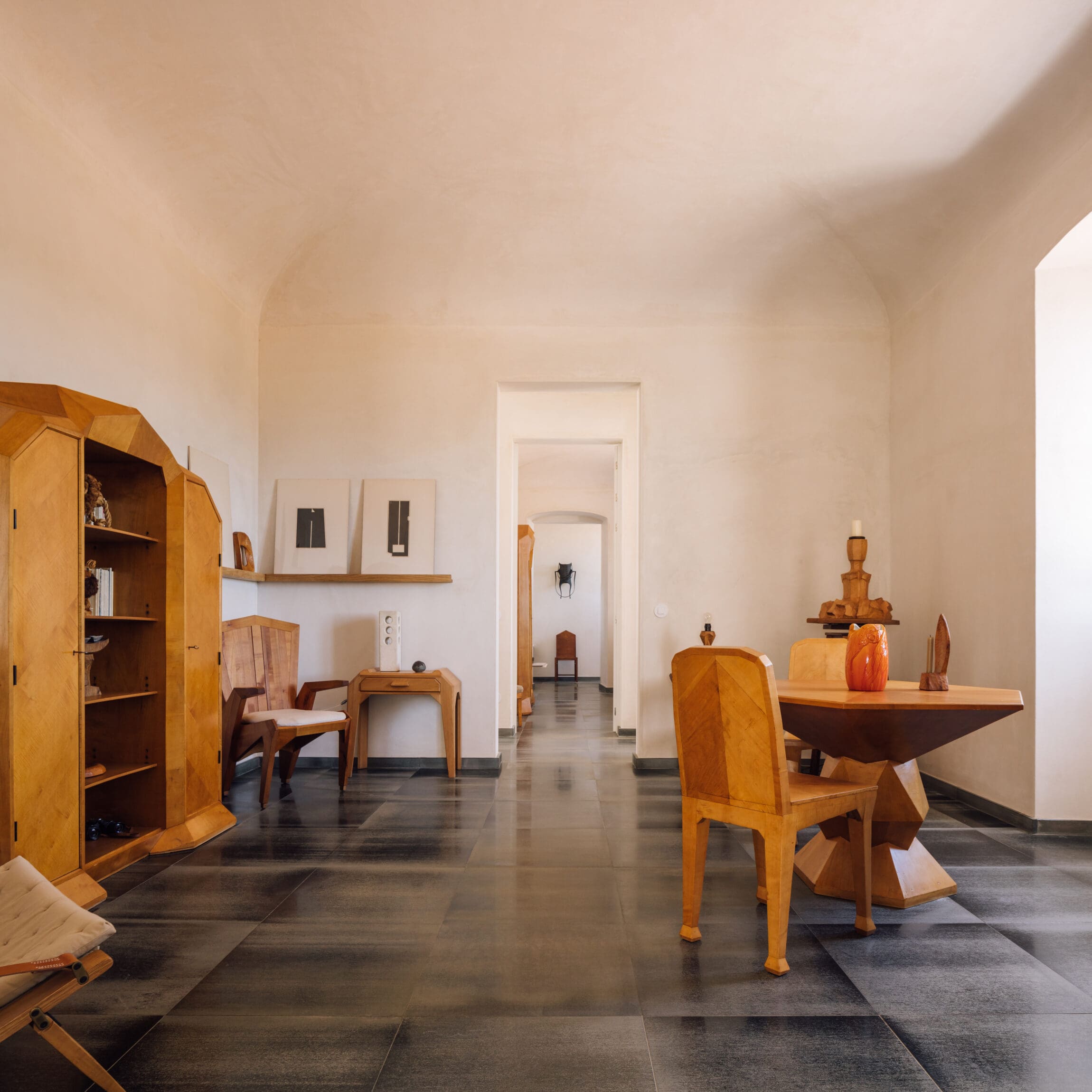
Stay at Dá Licença, Alentejo
If you like what you see in Dornach and wish to explore the movement further, Dá Licença, a small guest house surrounded by olive and cork groves in the Portuguese region of Alentejo, is filled with a private collection of anthroposophical design. The guest house was co-founded by Franck Laigneau and his partner Vitor Borges; Laigneau previously ran a gallery in Paris dedicated to jugendstil and anthroposophical furniture, and has since furnished the place with these twin strands of his collection. Guests at Dá Licença can eat their meals at a Dornach-designed table, sleep in a Dornach bed, and recline in Dornach chairs. The couple’s art collection can also be explored throughout the hotel, making Dá Licença an intimate art destination in its own right. Suites from 450 EUR a night

St Moritz
St Moritz, in the Engadin valley of Switzerland, is one of the most glitzy resort towns in the Alps – a place known as much for its horse racing on the frozen lake each winter as it is for skiing. Among the high end boutiques from some of the biggest fashion houses in the world, you can also find some cutting edge art galleries. St Moritz has a gallery on Via Serlas – one of its two Alpine destinations – which occupies three floors of a building owned by Badrutt’s Palace. The gallery hosts two parallel exhibitions at any one time, and everything is free to view.


A 20-minute drive down the valley brings you to the traditional village of Zuoz, where further art destinations can be discovered. Galerie Tschudi spans several floors, including a soaring hayloft, allowing varied exhibitions to be shown across its spaces. The gallery holds three shows at one time, and spans work in various scales, from large multi-storey installations in the main room to intimate photography prints.

A walk across town to Hotel Castell will bring you up to Skyspace Piz Uter (2005), a structural installation by US land artist James Turrell. His Skyspace series have been erected across the world; each involves a specifically proportioned chamber with an aperture in the ceiling that opens to the sky. Situated at 2000 metres above sea level, Skyspace Piz Uter is clad in dry masonry, and has two distinct openings: the entranceway, framing views of Piz Uter mountain, and the oculus above, presenting the ever changing sky like one of Turrell’s distinctive light installations. The most dramatic time to experience this work is at dawn or dusk. Head up to the structure, take a seat inside, sit in silence for half an hour, and see what you discover.
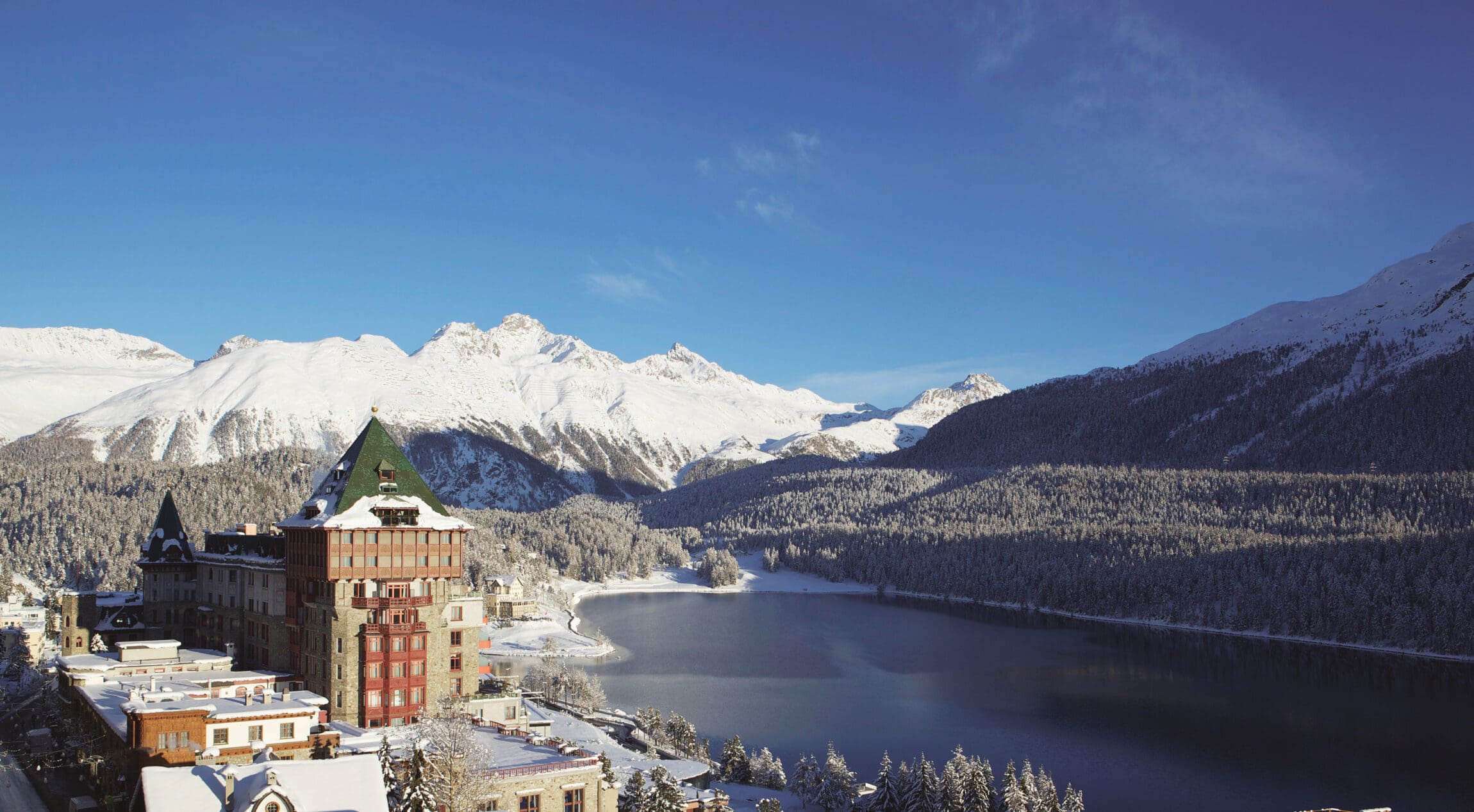
Stay at Badrutt’s Palace
Immediately opposite Hauser & Wirth St Moritz is Badrutt’s Palace, the stately hotel built in 1896. Multiple restaurants, lounges, bars, spas, and guest rooms can be explored throughout the palatial hotel, all with soaring ceilings and sweeping views of Lake St. Moritz and the dramatic peaks behind. Rooms from 672 CHF.
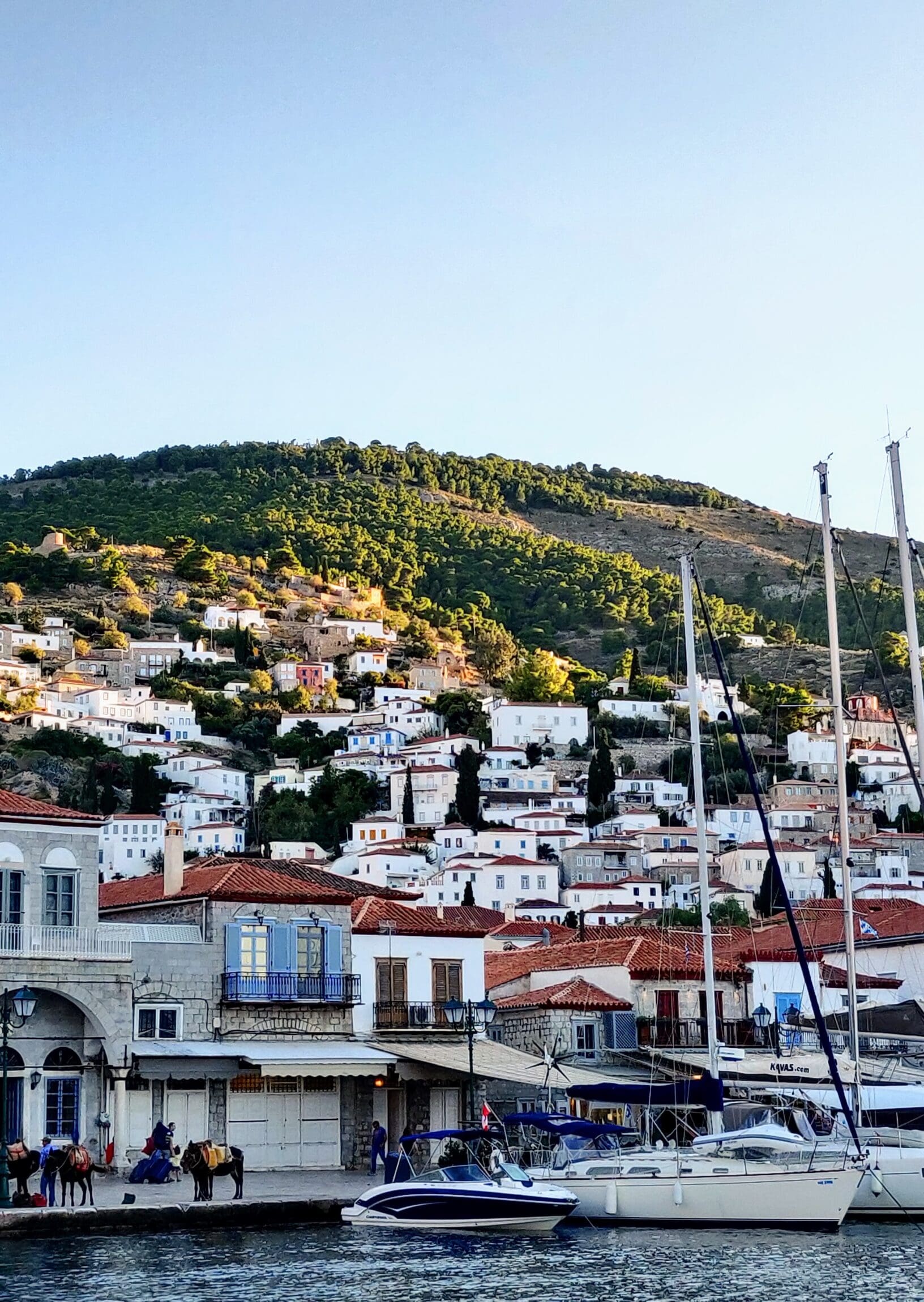
DESTE Foundation Projectspace Slaughterhouse, Hydra
The Greek island of Hydra, accessible via a two-hour ferry from Piraeus, can only be explored by foot, boat or donkey – no wheels are allowed, including bikes, which means the traditional layout and architecture of Hydra Port is completely unspoiled by the construction of large hotels or other buildings. Artists, writers and musicians gathered on Hydra during the 1950s and 60s and it is where Leonard Cohen met Marianne Ihlen, who became his lover and muse. Along the coast, a former slaughter house has been converted into a small, dramatic and remote art space by the DESTE Foundation. The Slaughterhouse has hosted solo shows of major artists almost every summer since its launch in 2009, including David Shrigley and Jeff Koons. The old stone building is perched isolated on the coast, and is best accessed either via a short walk from the port, or by water taxi – the main mode of transport around Hydra’s coast. The gallery is only open during the months of June to October.


Stay at Hotel Miranda
The 14-room Hotel Miranda is found on a side street a few minutes’ walk from Hydra’s harbour. Bougainvilleau spills over the small garden courtyard in the entrance, and the main suites on the second floor have views of the sea, with Venetian frescoes painted on their ceilings. The small hotel has the feel of a private home, and offers breakfast to guests. Rooms from 80 EUR.




